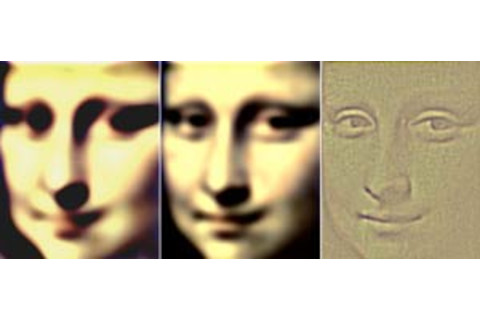"What people love about the Mona Lisa is that her expression changes as you look at her, and that makes her seem alive," says Margaret Livingstone, a neurobiologist at Harvard University. She insists that the expression really does change, but the switch occurs in your eye, not in the paint. Our central vision is good at picking up small details, whereas peripheral vision processes blurry features, called low spatial frequencies. Mona Lisa's smile is painted in soft tones and muted colors that fall into those low frequencies, Livingstone finds. "You cannot see it with your central vision. It appears only to your peripheral vision when you look away from the mouth," she says.

Soft tones emphasize Mona Lisa's smile. Harder-edged features evoke an enigmatic, somber expression. Photograph courtesy of Margaret Livingstone/Harvard University.














